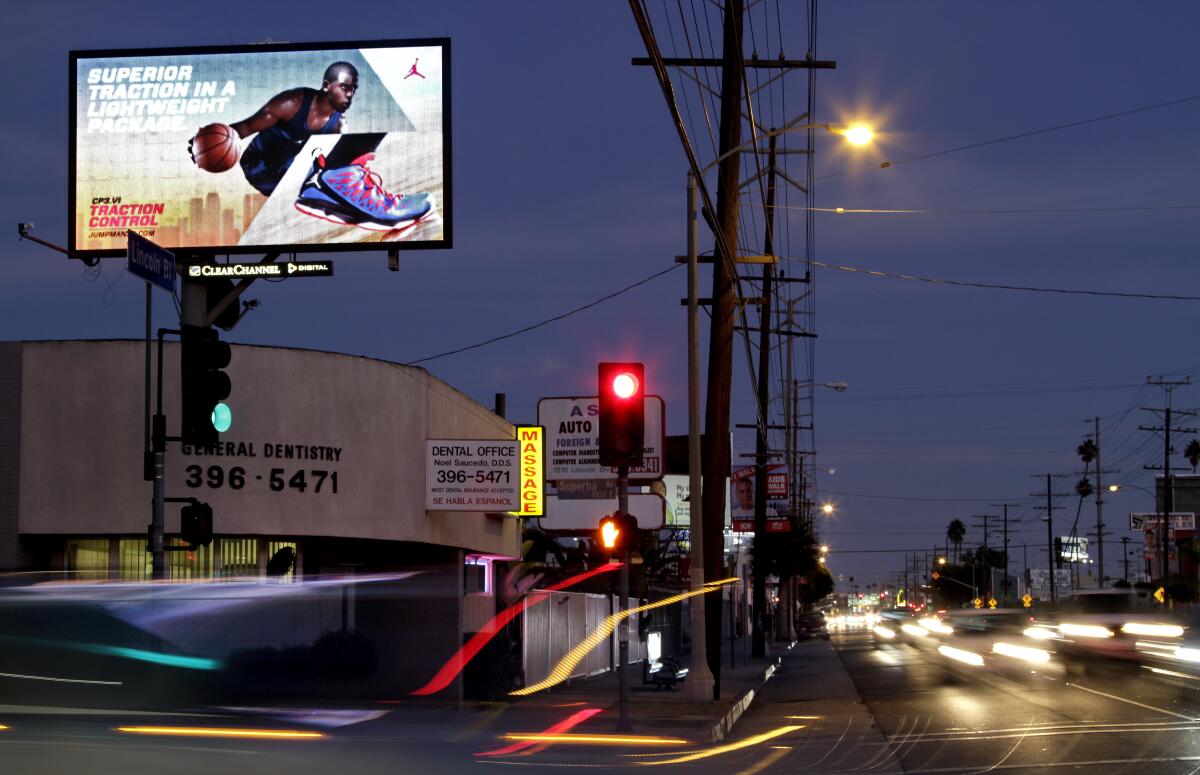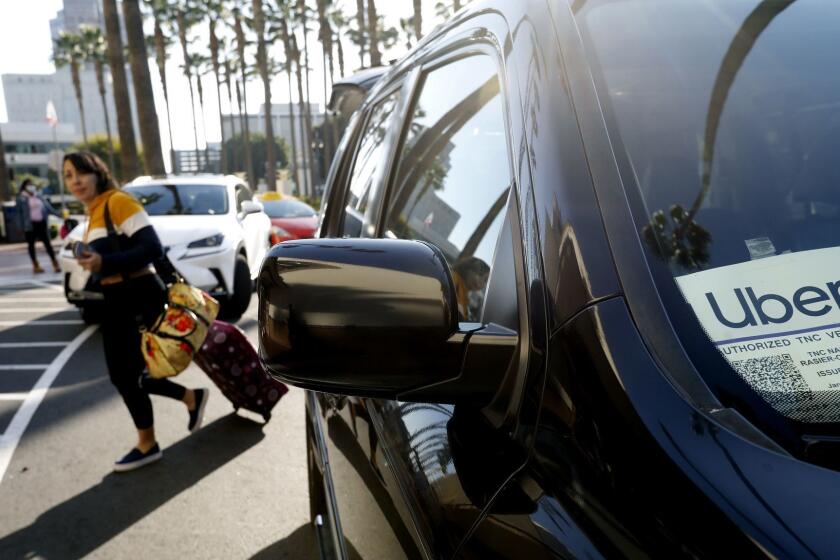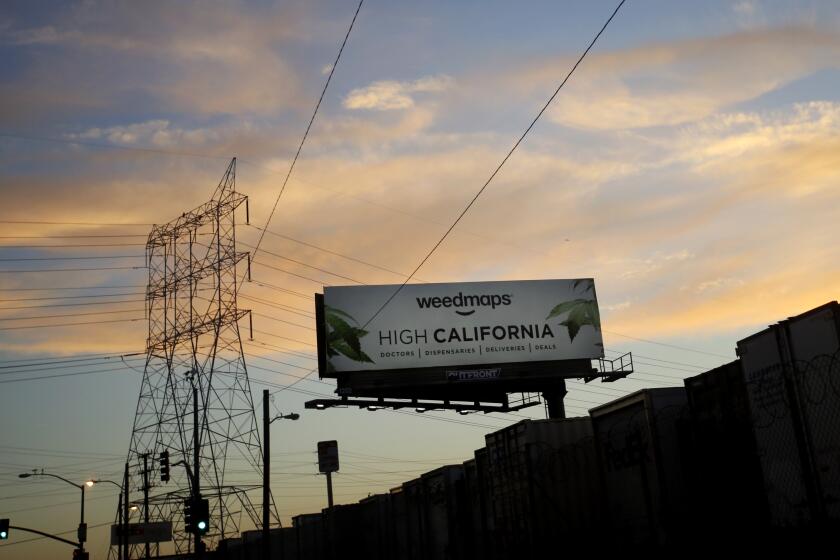Editorial: No, Los Angeles doesn’t need dozens of new digital billboards

Once again, Los Angeles leaders with dollar signs in their eyes are ready to trade street safety and the city’s visual landscape for a check from digital billboard advertising companies.
Last week, the Metropolitan Transportation Authority’s Board of Directors approved a plan hammered out with the city of L.A. to put up as many as 93 bright, blinking billboard-size digital signs next to freeways and in communities across the city.
Metro pitched the billboards as a public service that could provide commuters with useful information about road conditions and transit alternatives. Really, this is about money. Seven out of every eight messages would show ads. Metro and city leaders see digital signs as a cash cow, and they’re willing to put up with billboard blight for the possibility of $300 million to $500 million in advertising revenue over 20 years, split between the transit agency and the city.
But at what cost?
As if drivers in Los Angeles needed another distraction.
Does Los Angeles — a city where dangerous driving is already an epidemic — really need more competition for motorists’ attention? Research suggests large digital billboards interrupt drivers’ focus and can increase the risk of a crash. It makes no sense to put more distractions on L.A. streets at a time when traffic deaths are on the rise, with 300 people killed last year, the highest number in two decades.
And do communities want television-like billboards looming over their streets, with images changing every eight seconds? The signs, some of which could have two display faces, are limited to major thoroughfares such as Lankershim and Pico boulevards, but L.A. has houses and apartments near such corridors. Those residents may not appreciate the flickering glow from their new electronic neighbors.
Metro tried to portray the billboard bonanza as a good thing for communities.
Under the plan, some of the money may be used for bicyclist and pedestrian safety projects near transit stops in low-income communities of color. But why should residents have to put up with a blinking digital billboard just for the possibility of street improvements — particularly when digital signs could make streets less safe? Bike and pedestrian safety projects shouldn’t come with strings attached.
Prop. 64 was supposed to shield teenagers from increased exposure to marijuana with major limits on billboard advertising. It hasn’t gone so well.
Metro said the plan will reduce billboard blight by requiring 2 square feet of static signage to be taken down for every 1 square foot of electronic signage put up. That’s a bad deal too.
The Los Angeles Planning Commission called for much stronger takedown requirements — 10 square feet of old signage for every new square foot of digital signage — when it considered a citywide sign ordinance several years ago. That was a reasonable demand considering that digital signs, which can run multiple ads a day, are much more profitable than static signs. The City Council did not act on the commission’s recommendation and city law currently bans new billboards outside of sign districts, such as in downtown near Crypto.com Arena.
Metro’s billboard plan will require the city to change zoning laws to allow new signs and needs Planning Commission, City Council and mayoral approval. City leaders need to ask themselves whether the promise of ad revenue is worth the community impacts and the risk of reopening the battle with sign companies.
More than two decades ago, the city banned new billboards to reduce traffic hazards and protect the visual environment. But under heavy lobbying (and substantial campaign contributions) from the billboard industry, the City Council began carving out exceptions to the ban for some billboard companies “willy nilly,” as one judge scolded. That prompted lawsuits from other companies that wanted their signs permitted too. The lack of clear, objective rules on billboards bedeviled the city for years.
Sure, public agencies never have enough funding to do everything. But there is a real problem when leaders rely on selling public space to subsidize what should be basic infrastructure, such as pedestrian safety projects. Los Angeles recently approved a program to add bus shelters throughout the city; nearly 700 of the 3,000 shelters will include digital advertising. The shelters are essential to provide shade and rain protection for bus riders, but they wouldn’t be built without the advertising.
The money may be tempting, but Los Angeles doesn’t need nearly 100 bright, blinking digital billboards marring the horizon.
More to Read
A cure for the common opinion
Get thought-provoking perspectives with our weekly newsletter.
You may occasionally receive promotional content from the Los Angeles Times.












